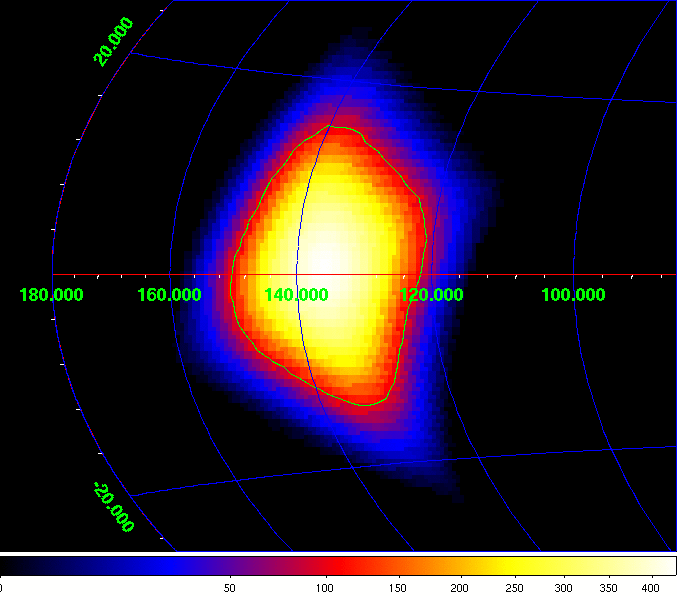Proposal Details - 0720025
Study of the hard X-ray orbital spectral evolution of LSI+61 303 (MOLKOV)
Proposal Abstract
LSI+61 303 is one of the few binary systems with a compact object and Be star from which unpulsed X-ray and radio as well as the high-energy gamma-ray (GeV, TeV) emission has been observed. The system is also known to emitAU-scale jet, which makes it a candidate for a Galactic "microblazar". The system lightcurves in different energy ranges show a puzzling behaviour with the X-ray maxima shifted with respect to the radio maxima and the maximaphase shifting from orbit to orbit. The origin of the compact source (neutron star or black hole) is not known yet, and neither we are sure on the energy of the electrons producing the observed X-ray emission. The goal of this proposal is to study for the first time the spectrum of the source in hard X-rays (above 50 keV) and its variability on the orbital timescale. This information along with the simultaneous observations in GeV energy band by FERMI will give us a clue to the physical processes taking place in the system and the possibility to built the emission formation model.
Observation Strategy (Recommended by TAC)
Total of 440 ks split into two 220 ks observations in the standard 5x5 mode centred on RA, Dec = 40.132, 61.229 (l,b = 135.675, 1.086). LSI +61 303 will be observed during its bright X-ray state, i.e. during the 0.35-0.65 orbital phase (T_0 = JD 2 443 366.775, P_orb = 26.496 days). The possible dates for this observation are: 2010-01-23 to 2010-01-31, or 2010-02-18 to 2010-02-26, or 2010-03-17 to 2010-03025, or 2010-07-27 to 2010-08-04, or 2010-08-23 to 2010-08-31, or 2010-09-18 to 2010-09-26.
Proposal grade: B
Data Rights (Recommended by TAC)
The TAC has allocated the following specific data rights to this proposal: LSI+61 303.
Consult the Data Rights policy for more information on Russian Federation proposals.
Exposure Map
The exposure maps are in galactic coordinates and units of ksec, and the colour scale is indicated at the bottom. The green lines provide the 100 ksec contour.
